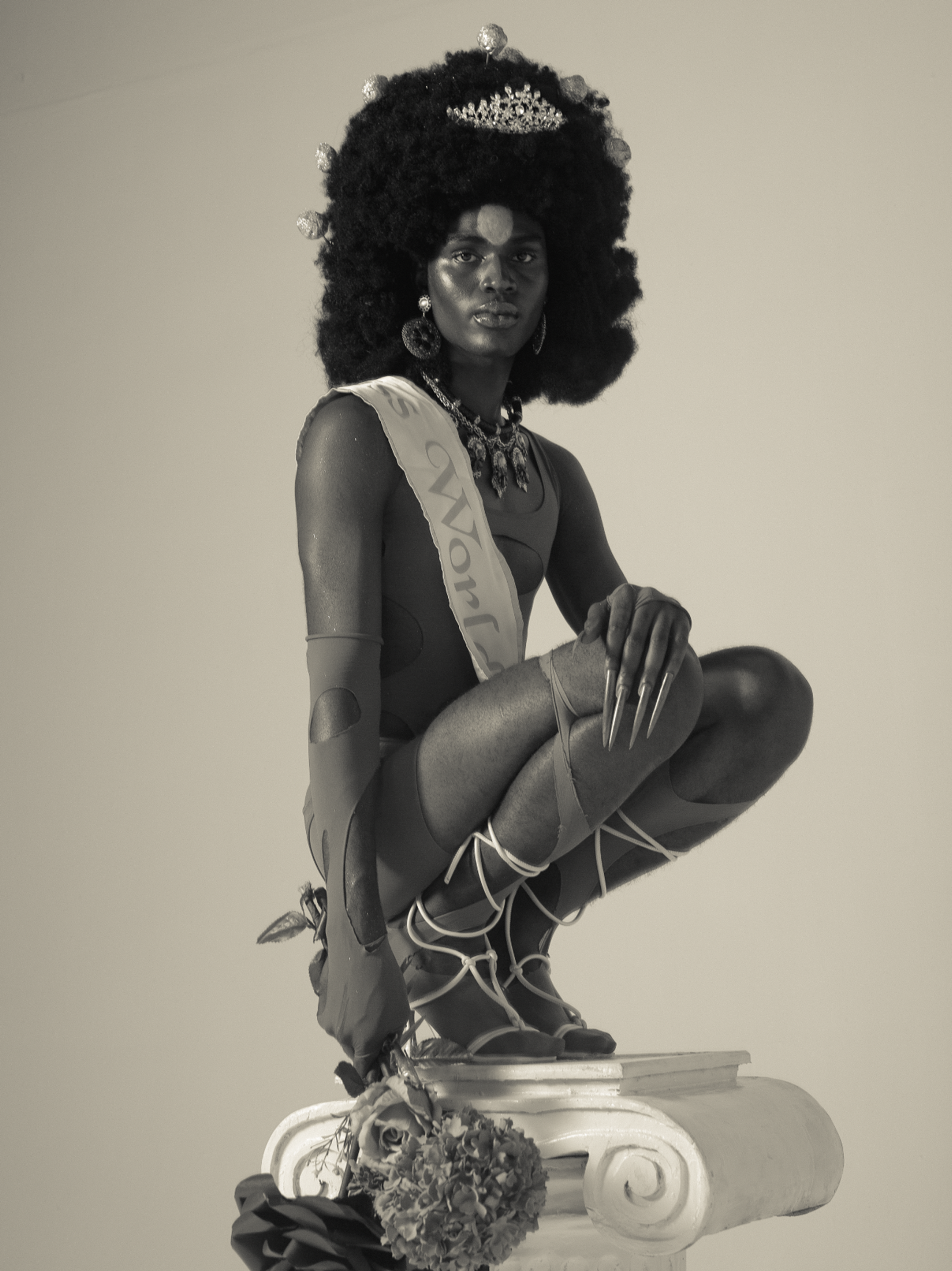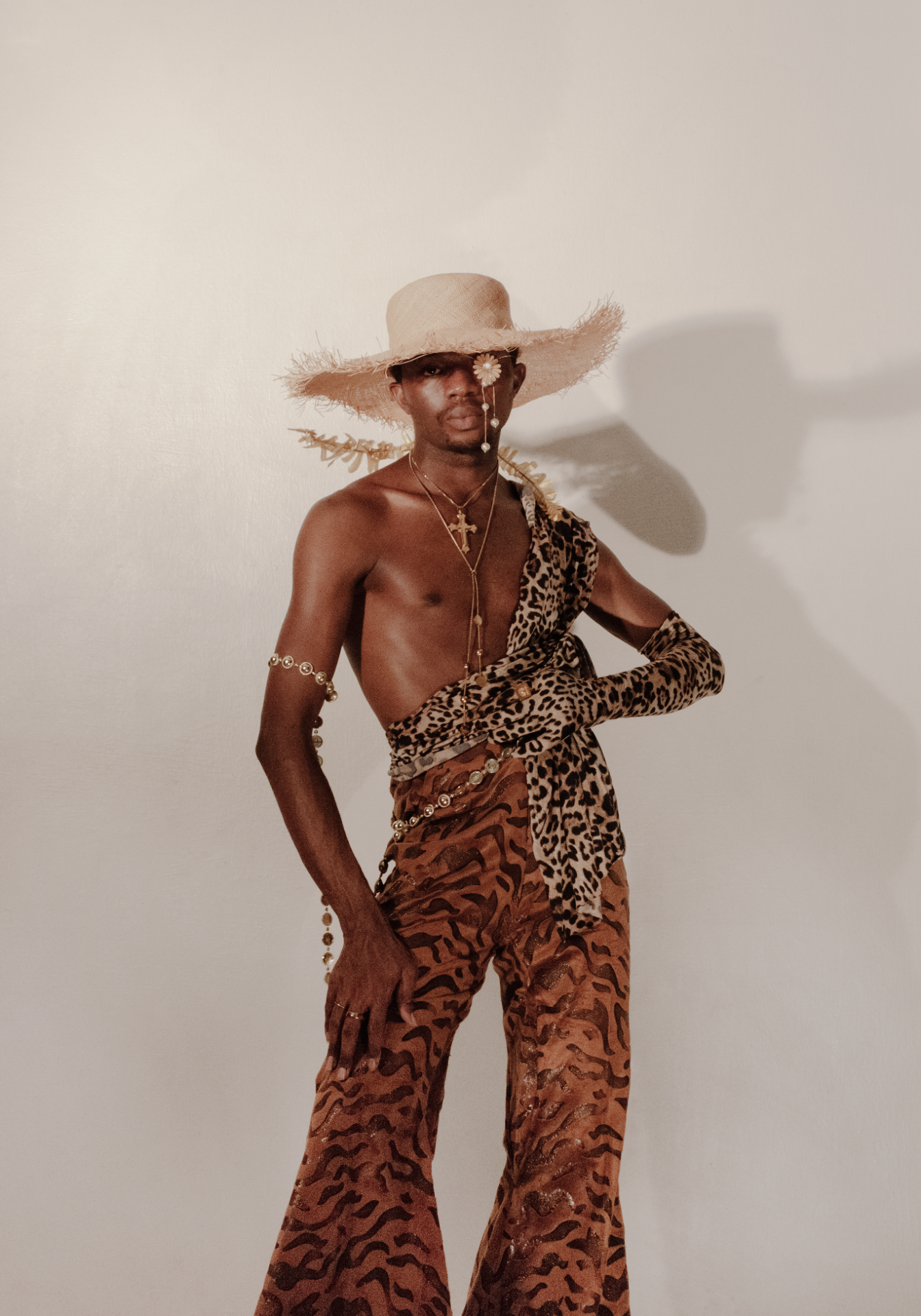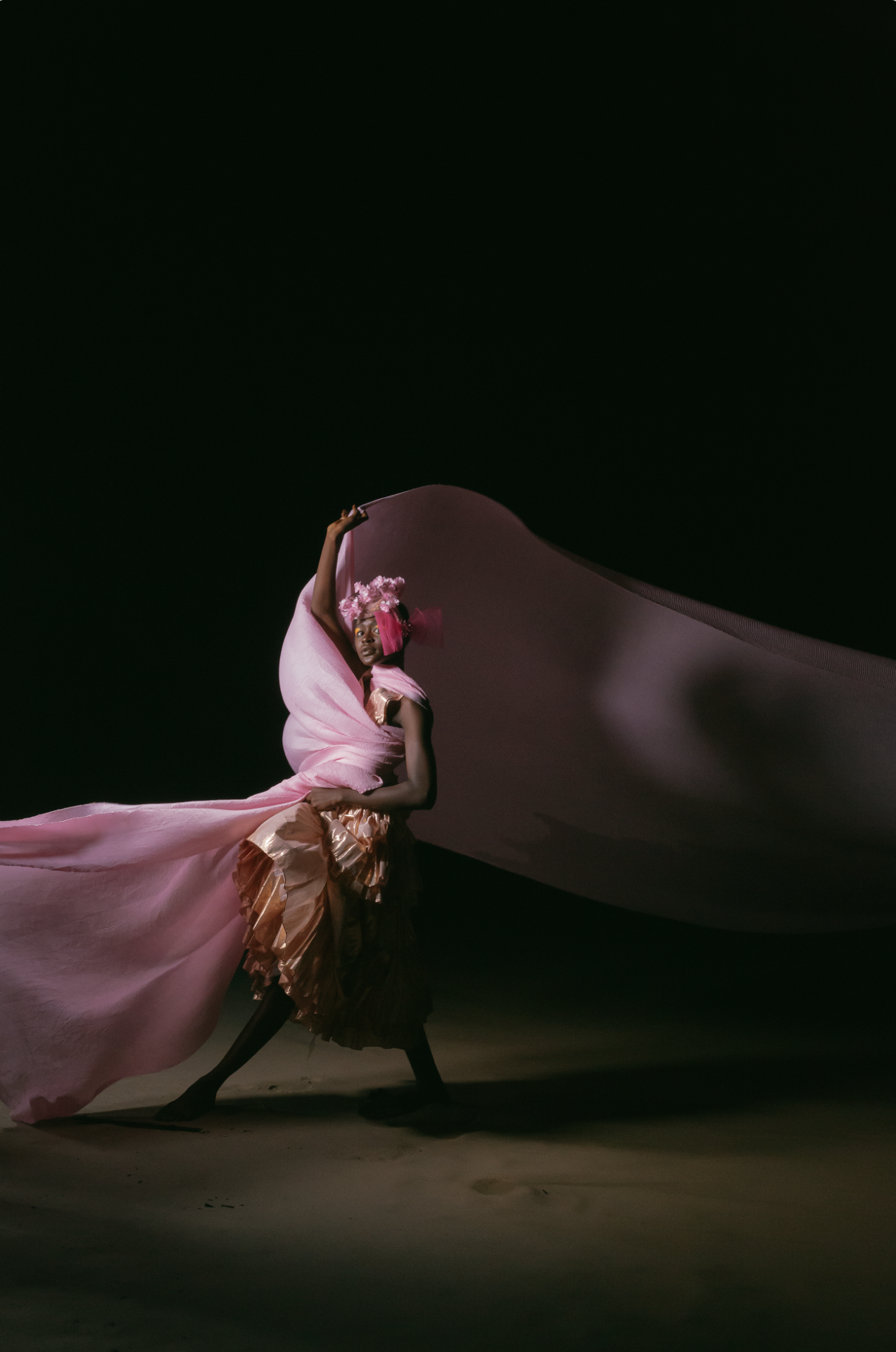You have been hailed as part of a new Black vanguard, a generation of photographers which seeks to challenge the idea that Blackness is homogeneous. Do you consider your work to serve as a form of visual activism?
I do. One of the more recent projects I did is called Corridors of Power, which examines the idea of power structures within society, and how they affect sexuality and masculinity. To give some examples: in one of the images we celebrate a non-binary wedding, which was my way to challenge one of the deeply ingrained traditional institutions in Nigeria, which is marriage. There are also elements like beauty pageantry – including long beautiful hair and femme dresses – that are a form of critique on how politics has militarized LGBT+ representations as being ‘filthy’.
For me, that is how I address activism. I pick elements within society and find a way to critically yet playfully address it.
It’s been really amazing to see a lot of young Nigerian photographers like yourself carving out a space for themselves. What are some of the challenges you face as this new generation?
I mean it is very liberating to see that a lot of young creatives are getting to a point where they are no longer covering or hiding, and are expressing themselves fully. When I first started I fell in between fashion and art, and people didn’t really know how to pigeonhole me – so you have to figure out where you belong.
I always trace that back to the fact that there is a lack of platforms here locally, because we don’t have that ‘hardware’ or structures in place. It leads to a huge export of West African talent towards the West. It seems like a creative’s work only gets validated when it is featured in Western galleries, publications, et cetera. So local artists yearn for that recognition. But what often ends up happening is that we get lumped together as ‘the new rising artists from Africa’, rather than individual profiles being written about us and our work.
You’re being framed as a Western ‘discovery’, yet again.
Exactly. But it remains a bit of a double-edged sword, because you want to be respected and to be approached – for the right reasons. Not to be part of some sort of checklist.
Can you describe your work in three words?
Sensual, it’s bold for sure. And it’s true…
Last but very much not least, how was working with beyonce?!
I didn’t get to work with her directly, but the project itself was just such a beautiful collaborative experience ovall. Getting the brief, I was able to put my interpretation on it, that felt very freeing. I got to do what I love to do and I’m very proud having to have been part of such an iconic project.


